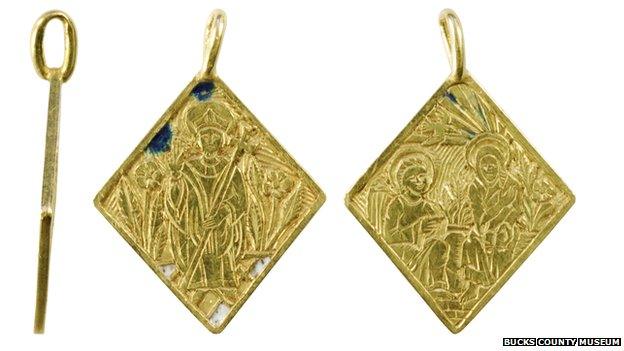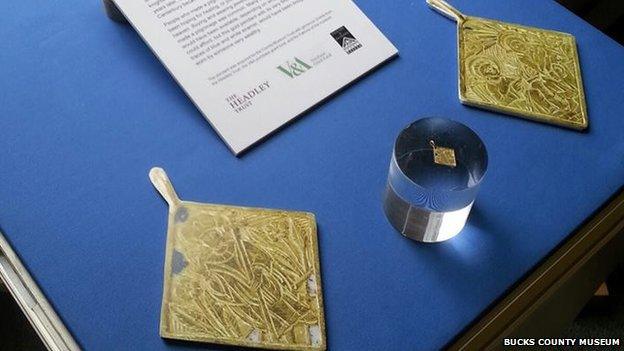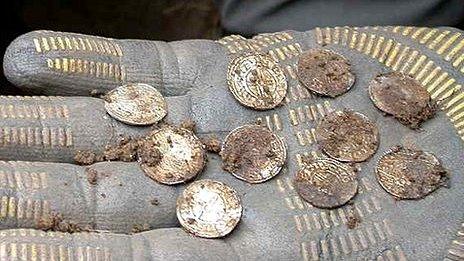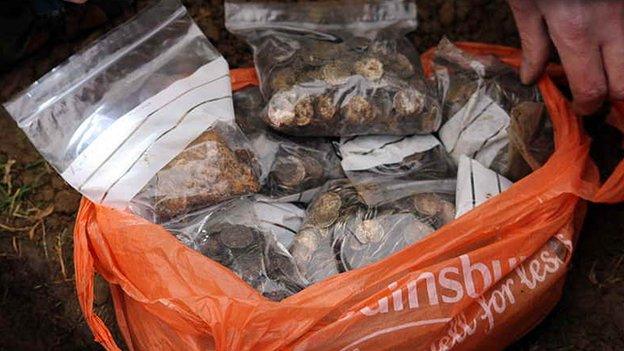Gold pendant bought by Buckinghamshire County Museum
- Published

The pendant depicts a man in bishop's robes, probably Thomas Becket, and the Annunciation of the Virgin Mary
A 500-year-old pendant worth more than £13,000 was saved from being sold as scrap gold after a jeweller recognised its value.
The jewellery, dating from 1450-1500, was found more than 30 years ago in a garden in Dorton, Buckinghamshire.
The owner had no idea of its value until trying to sell the pendant, when experts indentified it as medieval.
Buckinghamshire County Museum, which obtained grants to buy the jewellery, said it was an "extremely rare" find.

The pendant would have been bought and worn by someone very wealthy, the museum said
The gold pendant, with fine carving and traces of blue and white enamel, depicts two Christian religious images, and is thought to be a souvenir of a pilgrimage to Thomas Becket's tomb in Canterbury.
After its age was confirmed, the British Museum said it could be sold privately as it was found before the 1996 Treasure Act was passed.
Bucks County Museum was able to cover the whole £13,500 cost of buying the piece through grants from the Headley Trust, the V&A Purchase Grant Fund and the Patrons of the Museum.
Museum spokesman Brett Thorn said the find was "extremely rare" and a "beautiful and fascinating little piece of Bucks heritage".
"Apart from the incredible level of skill of the craftsman who made it, it also tells us something about how important religion was to the lives of the people at that time," he said.
"To realise the fact that they would invest so much time and wealth in a tiny souvenir which no-one else would ever see, perhaps hoping for a miraculous cure, helps us understand them better."

Thomas Becket and Canterbury
Thomas Becket, archbishop of Canterbury, was murdered in 1170 in his cathedral by four knights who thought the king wanted him dead
He was made a saint three years later and his tomb became an important site of pilgrimage
Pilgrims may have been hoping for "miracle" cures or just trying to help their souls get into heaven
Buying and wearing jewellery to show you had made a pilgrimage was common - many different souvenirs would have been available, depending on what the pilgrim could afford
Source: Buckinghamshire County Museum

- Published3 January 2015

- Published2 January 2015
